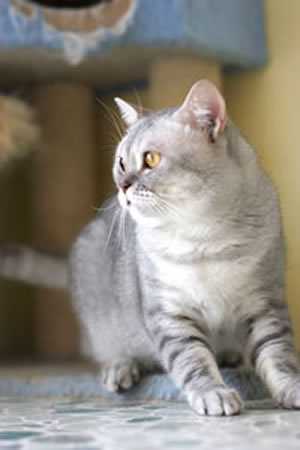 By now you probably know all about how toxins can harm you, and you’re probably doing everything you can to keep your body free of them. But did you know that toxins can also hurt your pets? By following these tips, you can help your pet enjoy a toxin-free life that’s as clean and healthy as yours.
By now you probably know all about how toxins can harm you, and you’re probably doing everything you can to keep your body free of them. But did you know that toxins can also hurt your pets? By following these tips, you can help your pet enjoy a toxin-free life that’s as clean and healthy as yours.
Avoid overly processed, commercial pet foods
These often contain preservatives like BHA (butylated hydroxyanisole) and BHT (butylated hydroxytoluene), both of which might be carcinogens. Because standards for human food are stricter than those for pet food, the law allows pet food to contain EQ (ethoxyquin), a preservative considered unfit for human consumption. Studies on animals have shown that EQ can cause liver and kidney damage.
Pet food often contains food coloring; some food dyes could be carcinogenic. Food dyes cause allergic reactions in people and behavioral problems in children. Remember that dogs and cats are partially color blind. Pet food manufacturers add artificial coloring to food to attract pet owners; not pets. Your pet doesn’t care what color its food is. It uses its nose, not its eyes, to decide what it wants to eat.
Quiz: Is Your Body TOXIC? Take the Test...
(get your free personalized report)
Commercial pet foods, particularly dry foods, often contain large amounts of cheap grain, such as corn. This grain is used as filler, so pet food manufacturers can produce large amounts of pet food cheaply. Grains often harbor poisons called mycotoxins, which come from mold. Aflatoxin, a type of mycotoxin, has caused outbreaks of food poisoning in dogs. Cats that eat large quantities of grain risk developing diabetes, as they are obligate carnivores and cannot metabolize carbohydrates easily.
To keep your pet healthy, purchase wet, organic dog or cat food, and be sure to check the ingredients before you buy.
Get rid of fleas safely
Placing a flea collar around your pet’s neck seems like an easy way to keep fleas away. The easy way isn’t always the safest way, however. Chemical flea collars contain pesticides, including propoxur and tetrachlorvinphos, which cause nerve damage and might cause cancer. The chemicals in flea collars work by leaving pesticide residues on your pet’s fur. Ask yourself if you would wear a necklace coated in poison all day long.
Topical flea control treatments—shampoos, dips, powders, and sprays— can also contain harmful pesticides.
There are safe ways to keep your dog or cat flea free. Basic hygiene, which includes vacuuming your house and brushing your pet regularly, will help keep the creatures away.
Quiz: Is Your Body TOXIC? Take the Test...
(personalized report)
Consider using natural flea treatments with citrus peel oil. It contains limonene; a natural insecticide.
You might want to try an ultrasonic flea collar, although studies indicate that they are not very effective, and some people think it causes dogs to develop behavioral problems.
Keep Your Pet’s Toys Clean
Your dog may love his plastic chew toy, but it could actually be harming him. Plastic pet toys can contain Bisphenol A (BPA), which can disrupt the endocrine system. Pet toys can also contain lead, especially those that are painted. Rawhide chew toys can have formaldehyde coatings.
A clean life for your pet doesn’t have to be a life without fun, however. There are companies that sell organic, toxin-free cat and dog toys. Another healthy, clean option for your dog is a beef marrowbone from your local butcher. Just make sure it’s the right size. A marrowbone that’s too small for your dog can cause choking.
Remember that your pet lives where you live
If you expose yourself to toxins at home, you’re exposing your pet to them, too. Cigarette smoke and toxins from fragrances and cleaning products can harm both you and your pet. In fact, exposure to the same level of toxins can be more dangerous to your pet, because of its smaller size. In addition, dogs and cats often lick themselves, so they are likely to ingest any toxins that fall from the air onto their fur. Keep your surroundings clean, and both you and your pet will enjoy happy, healthy lives.
Additional Sources:
Artificial preservatives and their harmful effects: Looking toward nature for safer alternatives, International Journal of Pharmaceutical Science & Research
Bisphenol A: An endocrine disruptor with widespread exposure and multiple effects, The Journal of Steroid Biochemistry and Molecular Biology
Cats and Carbs: An Update on Feline Diabetes, ASPCA
Toxicity of D-Limonene, the major component of citrus peel oil, to all life stages of the cat flea, Ctenocephalides felis (Siphonaptera: Pulicidae), Journal of Medical Entomology
Food Dyes: A Rainbow of Risks, Center for Science in the Public Interest
NRDC Sues EPA to Ban Two Toxic Pesticides in Pet Flea Collars, National Resources Defense Council
